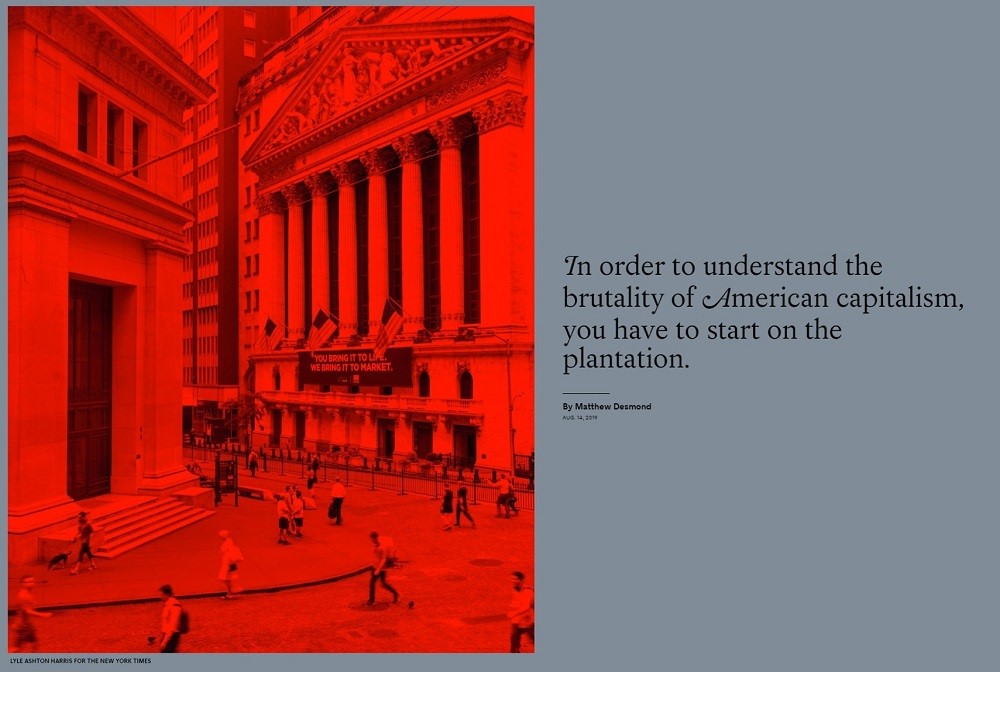 The New York Times has launched a project called the 1619 Project. ‘The 1619 Project is a major initiative from The New York Times observing the 400th anniversary of the beginning of American slavery. It aims to reframe the country’s history, understanding 1619 as our true founding, and placing the consequences of slavery and the contributions of black Americans at the very center of the story we tell ourselves about who we are’.
The New York Times has launched a project called the 1619 Project. ‘The 1619 Project is a major initiative from The New York Times observing the 400th anniversary of the beginning of American slavery. It aims to reframe the country’s history, understanding 1619 as our true founding, and placing the consequences of slavery and the contributions of black Americans at the very center of the story we tell ourselves about who we are’.
 Here is an excerpt from an essay written by Matthew Desmond, professor of sociology at Princeton University for the Times’s 1619 Project.
Here is an excerpt from an essay written by Matthew Desmond, professor of sociology at Princeton University for the Times’s 1619 Project.
‘Those searching for reasons the American economy is uniquely severe and unbridled have found answers in many places (religion, politics, culture). But recently, historians have pointed persuasively to the gnatty fields of Georgia and Alabama, to the cotton houses and slave auction blocks, as the birthplace of America’s low-road approach to capitalism.
Slavery was undeniably a font of phenomenal wealth. By the eve of the Civil War, the Mississippi Valley was home to more millionaires per capita than anywhere else in the United States. Cotton grown and picked by enslaved workers was the nation’s most valuable export. The combined value of enslaved people exceeded that of all the railroads and factories in the nation. New Orleans boasted a denser concentration of banking capital than New York City. What made the cotton economy boom in the United States, and not in all the other far-flung parts of the world with climates and soil suitable to the crop, was our nation’s unflinching willingness to use violence on non-white people and to exert its will on seemingly endless supplies of land and labor. Given the choice between modernity and barbarism, prosperity and poverty, lawfulness and cruelty, democracy and totalitarianism, America chose all of the above’.
